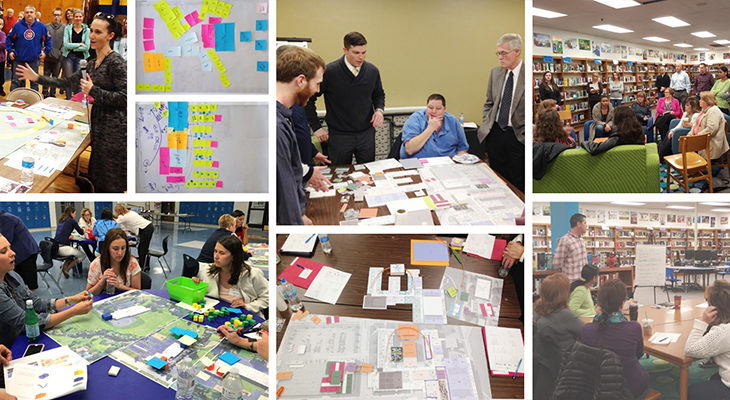
Passing a school construction referendum requires a careful balancing act of showing the need, making the right ask, and most importantly, building community support.
LaSalle-Peru Township High School District 120 operated a 90-year-old campus that had not received major updates in more than 50 years. The Illinois district needed to modernize its aging facilities, but many residents strongly defended the campus’s traditional architecture. The challenge: how could the district convince the community to support the work?
An initial master plan led by Legat Architects called for $110 million in construction. After community referendum surveys, the district and Legat reduced the anticipated work to $65 million. More analysis and a model classroom project revealed that $38 million was what the community would be willing to support … and it did. The referendum passed and three years later, renovations revived nearly every space within the school.
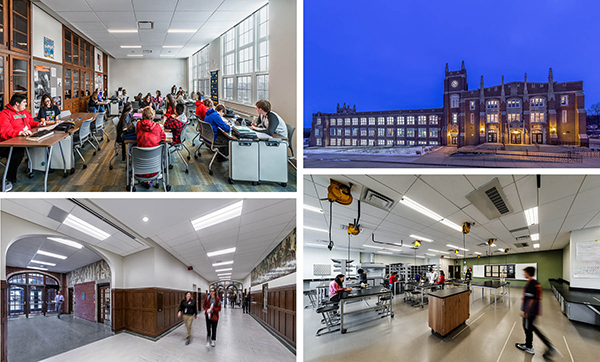
This story illustrates a powerful lesson about referendum planning: districts need to know how much construction work residents are willing to support on the ballot. And getting to the right ask means conveying a sense of urgency but not rushing a community. It also means involving community members to build consensus so that the idea becomes theirs. If you don’t take the time to involve the community, people will come back saying, “You have an idea and you’re trying to force it down our throats.”
When interacting with communities about referendums, districts must identify the amount of funding available and tell a compelling story that focuses on the need … not the want. That need typically focuses on substandard existing conditions ranging from dated classrooms and technologies to safety shortcomings. It helps to paint a picture while keeping the focus on creating better learning environments for the ultimate beneficiary: the students.
What’s the Hurdle?
Ed Sullivan, owner at EOSullivan Consulting and former Illinois state legislator, said that each district faces a different challenge when it comes to referendum planning. It could be that after years of misunderstanding, a district has a dubious image within the community. Sometimes a community has repeatedly rejected a referendum at the ballot. Other times a community is skeptical because a previous referendum failed to cover promised work.
Sullivan said the problem often boils down to unclear expectations between the district and the community regarding what the priority is. Thus, many districts face a conundrum: Do they keep pumping money into a 60-plus-year-old facility that does not support 21st-century learning? Or do they make the investment to build a new facility that enhances student performance and reduces energy expenses?
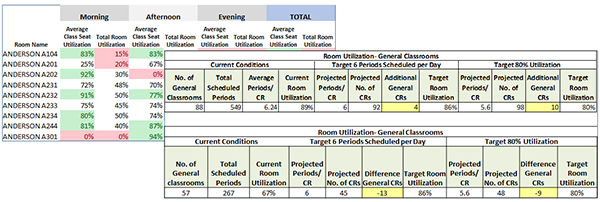
Guiding the Band and Using the Tools
Cotter Consulting Vice President Dorothy McCarty compares the process of preparing for a referendum to playing in a band. It starts with assembling the members: school stakeholders, parents, residents, and consultants. Once the best performers are selected, they work toward a common goal, with the right people coming in at the right time.
“Realistic expectations are important,” said Cotter. “If you dream too huge, you might not have the board or community’s support.”

She points out tools that will help districts arrive at those realistic expectations:
- Space utilization studies illuminate needs and their rationale. This tool enables districts to look beyond bricks and mortar and capitalize on data to support programming opportunities.
- The life cycle analysis helps determine the long-term cost implications of things like energy-efficient technologies. How many years of energy savings will it take to pay back the cost of solar panels or a geothermal system?
- A budget tracking report extends throughout the project. It allows administrators to keep up with spending, identify any red flags, and give community members weekly reports.
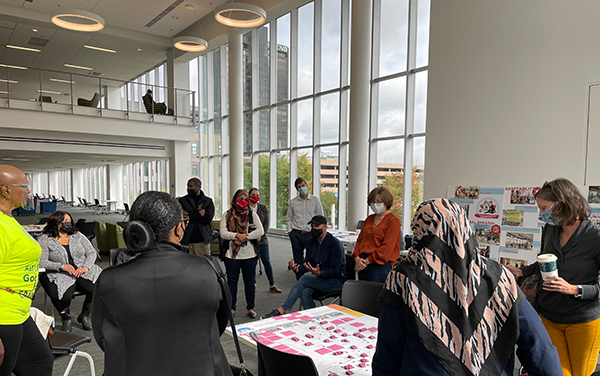
Community Engagement
Community engagement is critical for not only securing higher levels of referendum funding but also helping districts obtain realistic numbers in terms of how much a community is willing to support.
Sullivan argues that referendums are more successful when community-driven rather than district-driven. “When community members collaborate, they’re much more likely to support their plan.”
Community engagement includes everything from surveys and in-person information gathering to PR and marketing. Sullivan suggests that districts move through four phases:
- Gather feedback (community likes and dislikes about schools, administration, board)
- Identify individual projects (talk to the community engagement committee, conduct phone survey, etc.)
- Focus on what the community is willing to support and drive toward community consensus on a final plan
- Come up with a plan and put it to the board to vote “yes” or “no”
Throughout all of this, districts must host meetings with community groups and report to the board. Sullivan offers three methods for collecting data: intuitive response (e.g., community surveys), informed response (from the community committee), and passionate response (i.e., public engagement sessions).
The combination of these strategies helps districts determine the level of support for various referendum items. Just as important as what a community supports is what it opposes.
“If a pool would sink the referendum,” said Sullivan, “the district needs to know that.”
Community Education and the Referendum Campaign
The purpose of community education, said Sullivan, is to inform voters about the referendum process, lead discussions about what is on the ballot (based on messaging), and answer questions. Methods districts can use to support community education range from town hall meetings and tours of impacted facilities to social media and reaching out to “key influencers” like mayors, state representatives, and even chambers of commerce or retirement villages.
When the time comes for the referendum campaign, the campaign committee and consultants pivot to focus on persuading voters to support the referendum. The four phases here are preparation (i.e., setting up the campaign), awareness (i.e., distributing information), persuasion (i.e., convincing community members to vote), and turnout (driven through several media).

Master Planning: Listening to the Data and the Community
The master planning process is most effective when it is community led and architect facilitated. During the first part of the master plan, the district and its consultants define the problem. This includes three phases:
- Gather information (e.g., data, spreadsheets) to explore where there is growth (or decline) and what facilities need to support that growth.
- During the Envision phase, we engage the community to solidify its vision and we analyze the district’s mission, which usually involves supporting student success. If that is the mission, then learning spaces (e.g., classrooms, labs, corridors) should be the thrust of the referendum.
- Define involves working with stakeholders to discover what “puzzle pieces” are needed to get referendum support. What spaces are needed? A STEM lab? An athletic facility? An art lab or music room? To determine how these pieces fit, we diagram and quantify areas needed for additions and/or renovations. One helpful tool during the Define phase is the probable cost analysis, which provides estimates for different options.
The team should not jump to any conclusions until it develops a solid understanding of these first three phases. Ultimately, we want to understand what the data says and what the community is telling us.
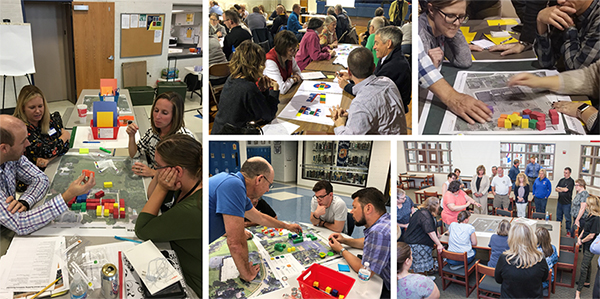
During the second part of the master plan, we solve the problem. That means the master planning team and community collaborate to put those puzzle pieces together:
- Consider many different options for fitting the pieces together. This is the point at which the architect gets to play architect and solve the problem.
- During the final phase, Transform, stakeholders take a hard look at the pros and cons of each option, then select the option that the community that is most willing to get behind.
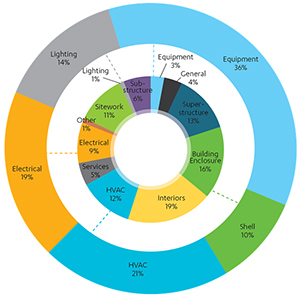
The Cost of Doing Nothing
Involving a construction management firm in the master planning process allows districts to get a more realistic understanding of cost and schedule implications.
Jay Ripsky, executive vice president at Pepper Construction, said that during the Gather phase, stakeholders often ask about the cost of doing nothing to improve an older facility.
“There is a cost to doing nothing,” said Ripsky. “School districts need to keep the lights on, the air conditioning going, and the rain out.”
Over time, costs of older facilities build up, particularly in the areas of maintenance and inefficient systems. Then there are the missed educational opportunities stemming from inadequate facilities.
Ripsky recommends a life cycle analysis that shows how systems upgrades will save money in the long term. The analysis identifies how long energy savings will take to pay back the first cost of upgraded systems (e.g., mechanical, electrical, plumbing).
“The payback can be fairly quick,” he said, “plus some grants support these systems.”
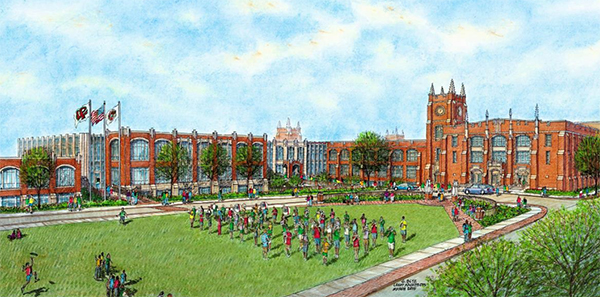
Spreading the Word for Success
If a school district plays its cards right, when the time comes for construction projects to go to the ballot, community members who participated in the planning process will think (and rightly so) that they contributed to it. They will become passionate advocates for the projects … and that passion will get communicated to neighbors and friends. And when that happens, districts will likely rejoice when the results come in.
Contact us to learn more about referendum planning or comment below to share your thoughts on this post.


